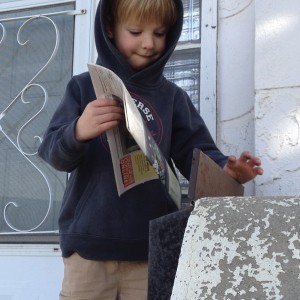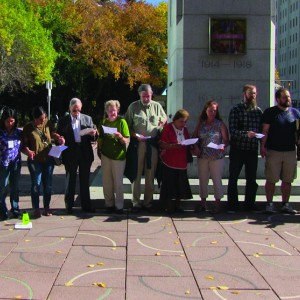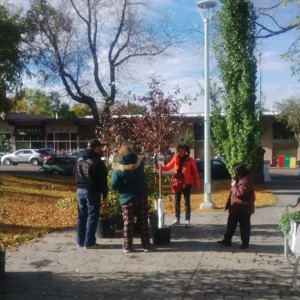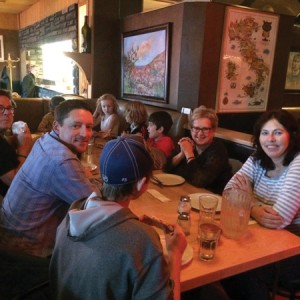Keep Warm Air In and Time to Reflect
Inside: I (Dan) am almost finished with the annual ritual of cleaning windows, returning storm windows, weather stripping the insides and outsides of doors and windows, and generally looking for anywhere the cold air might try to get in. The most economical way to keep the warm air in is to plug holes where you can. Windows are generally the worst culprits for admitting cold air. One option is to use a product that essentially creates an airtight window over an existing window. It involves taping a thin, transparent sheath of plastic around the perimeter of a window and then shrinking it with a hairdryer to make it tight. This is effective but the downside is that over the long haul of an Edmonton winter, it tends to loosen and sag and lose some of its effectiveness. It is not inexpensive either, especially if you are doing lots of windows. The other method is to buy strips of adhesive weather stripping and apply it along the edges of interior and/or exterior windows.
A significantly effective way to stop cold air from coming in through your windows, at night, is to put up insulated curtains. These can be purchased from Home Depot and range from $20-$40, depending on size of window. They come in handy in the summer as well, effectively keeping out the hot sun – over the years, they quickly pay for themselves!
Screwing on metal or rubber strips along the edges of doors is also an effective and relatively inexpensive method of stopping drafts. Inexpensive cans of Spray Foam can be purchased to plug holes in out of sight areas. We have used it to plug large seams along an interior/exterior chimney. Note that it is rather messy and should all be used in one go. Reusing it later can be challenging as the hole glues shut. Happy plugging!
Out: The days for puttering in the garden and tackling various tasks in the yard are, sadly, done for the year. Now what? Reflect! Learn! Plan! Winter is the time for sitting back and learning from the past year’s garden and also from all the wonderful resources at our fingertips, and for planning next year’s garden. I (Jen) have spent many happy winter hours with my gardening books, seed catalogues, and garden maps spread out before me at a table in the Zocalo atrium, planning, dreaming, and biding my time until I can finally get my hands back in the soil.
Over the next few months I will speak on the permaculture philosophy and approach to gardening (learned initially from our former McCauley neighbour, the Urban Farmer, Ron Berezan), and will suggest various excellent resource books for anyone interested in pursuing similar avenues. In a nutshell, permaculture is an approach to gardening (and to living!) that seeks to learn from and work with nature to enhance life, and quality of life, from the most basic level of soil life right up to thriving and interconnected community life.
Here is a great book to begin with: June Flanagan’s Edible Plants for Prairie Gardens: The Best Fruits, Vegetables and Herbs. It is specific to this region, and is an excellent, detailed resource for beginning prairie gardeners. The book references recent research and recommends newly developed prairie-hardy perennials, making it a valuable resource for even the most experienced of gardeners.
Dan and Jen live in McCauley.











